- Administrator
- Albums and Singles
 Compiling songs from various self-released cassettes, Selected Works I: Still Suns features a selection of Christian Dubé's work from between 2008 and 2011. Working heavily with cheap and damaged equipment, Rei Rea’s sound seems steeped most heavily in the noise world, with some more rhythmic elements slipping in to keep things original in an overpopulated genre.
Compiling songs from various self-released cassettes, Selected Works I: Still Suns features a selection of Christian Dubé's work from between 2008 and 2011. Working heavily with cheap and damaged equipment, Rei Rea’s sound seems steeped most heavily in the noise world, with some more rhythmic elements slipping in to keep things original in an overpopulated genre.
When "Duchess" first started, I was not sure what to expect from the tape, with an over-driven surge that borrowed as much from the intentionally low fidelity world of black metal as it did to the redlining bass and feedback of contemporary power electronics.Even when what at least resembled some sort of heavily processed, demonic voice samples dropped in to darken everything even more, it still was sitting somewhere on the fence between those two (admittedly related) genres.
As the tape played on, I found more in league with the electronics and industrial side of things, which is more my speed anyway.The quivering noise layers and shuffling, creeping pace of "Deader" instantly reminded me of Mind Control-era Genocide Organ, and even more so once the floor rattling kick drum sets in.While maybe not quite as closely, but the rhythmic synth pulse and slow burn of "Tres Mal" has the same feel throughout it.
The remainder is less specifically identifiable but shows influence from the early days of both industrial and harsh noise.The muffled, disjointed drum machine of "Throne of Papa" when paired with the out of tune distorted synth is not all that removed from the classic SPK works, and the distorted vacuum cleaner and junk metal banging of "Caco" comes across equally Test Dept and Merzbow in its approach."Rain Plaine" presents an overall more open, ambient feel to it, but what could be an ugly, noisy bit of brass instrumentation and crashes of noise keeps it from being placid in any way.
Other pieces have Dubé reigning the aggression just a bit and going in a somewhat different direction.The short "Slow Ipex" has the same lo-fi din as the rest of the compilation does, but grimy, shimmering tones and textures shine through here and there, giving it a slightly less ugly and oppressive feel.The distorted guitar of "Omal" might be a bit nastier in its sound, but the remainder of the piece is also more expansive and reflective.
Rei Rea is pretty damn prolific as best as I can tell, so this compilation functions as an ideal jumping in point. Looking at the multitude of releases he has issued since 2005, I do wonder how the quality control is overall, but the eight pieces compiled here are exemplary in their structuring and composition.Still Suns has just the right amount of noise and dissonance, but enough form and organization to give it a distinct identity.
samples:
 
Read More
- Administrator
- Albums and Singles
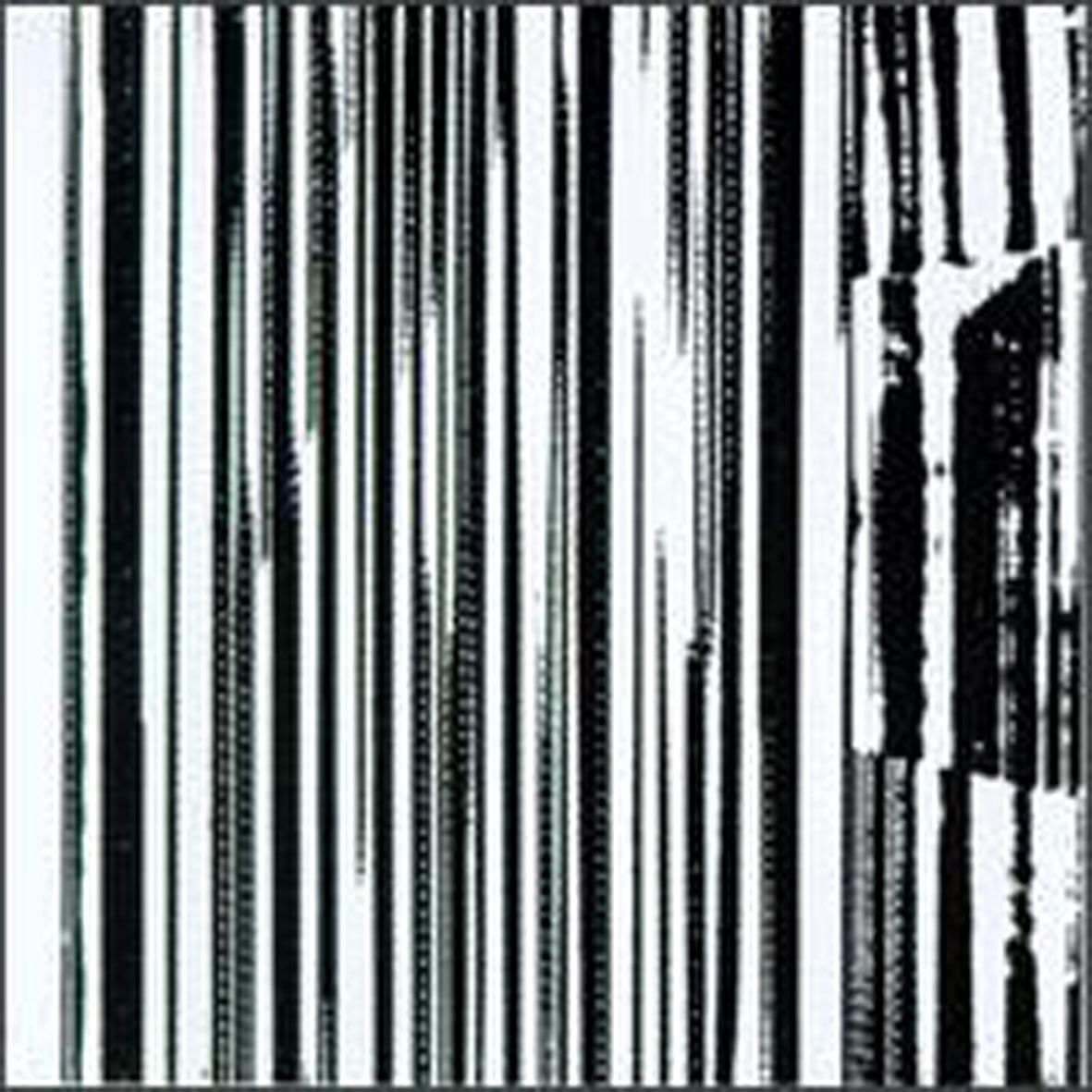 This 1992 double LP has historically been regarded to be The Dead C's zenith, though contention for that particular honor has gotten quite a bit more crowded with some of their more recent efforts.  In any case, there are certainly a few excellent songs and flashes of outsider brilliance amidst all the stumbling, shambling chaos and gleefully deliberate self-sabotage.  The flaws are a large part of the charm though–lots of people write good songs, but no one else has maintained this degree of playful, yet unwavering insouciance for quite as long as this New Zealand trio has (nor would they presumably want to).  That inexplicable persistence is its own artistic triumph though and this album is the most towering monument to it.
This 1992 double LP has historically been regarded to be The Dead C's zenith, though contention for that particular honor has gotten quite a bit more crowded with some of their more recent efforts.  In any case, there are certainly a few excellent songs and flashes of outsider brilliance amidst all the stumbling, shambling chaos and gleefully deliberate self-sabotage.  The flaws are a large part of the charm though–lots of people write good songs, but no one else has maintained this degree of playful, yet unwavering insouciance for quite as long as this New Zealand trio has (nor would they presumably want to).  That inexplicable persistence is its own artistic triumph though and this album is the most towering monument to it.
In classic self-defeating Dead C fashion, Harsh 70's Reality opens with over 20 minutes of abstract guitar noise in "Driver UFO."  Not a firestorm of dynamic Sonic Youth-style squall, mind you; just a buzzing, sizzling, and roiling ocean of feedback punctuated with occasional stabs of clanging strums or a rare deliberately played note.  Gradually it gives way to some indifferently played one-finger Farfisa drones that seem to randomly stop at times, before giving way yet again to a non-crescendo of still more strangled feedback.  Admittedly, some of the guitar noises are sporadically very cool (especially when they sound like a large dying animal), but "Driver UFO" is most successful as both a provocation and a statement of intent: it filled the entire A side of the initial vinyl release, forcing hapless first-time listeners to listen to the entire interminable thing in doomed expectation that it would eventually cohere into something more, which it never does.
Of course, the genius of The Dead C lies in their ambiguity and unpredictability, as the line separating "brilliant rock deconstruction" and "improvised, tossed-off mess" is particularly blurry with them.  While a lot of their work is admittedly lo-fi, half-assed chaos, they do occasionally get things gloriously right.  The first hint that there might be something more to this album comes with the surprisingly propulsive second song "Sky," which is basically sludgy two-chord punk rock enhanced by moaning and squawking feedback and drumming that sounds like it is constantly on the verge of losing the beat or accidentally changing the time signature (which is presumably intentional, as Robbie Yeats has spent time in, uh, more traditionally competent bands like The Verlaines).  Also, the lyrics, when decipherable, are simultaneously cryptic, defiant, and vaguely menacing (at least from their tone).
"Sky" is followed by the epic "Love," which is one of the best Dead C songs ever and the primary reason why this album is worth owning.  It is built upon a lazily strummed, brooding, and murky two-chord progression, which would normally be quite a bit of structure for a Dead C song, but it is initially undercut by a noisy, wandering guitar solo, odd stops and starts, and unnervingly arbitrary snare hits.  After about three minutes, however, Michael Morley (I think) steps up to the mic and starts creepily repeating variations of the phrase "and you talk about the rules" with unexpected intensity.  From then on, "Love" is basically 9 minutes of slow-burning, ebbing-and-flowing bad-ass noise rock perfection, as either Morley or Bruce Russell unleashes a prolonged meandering guitar solo that resembles nothing less than a demon-possessed Neil Young on quaaludes...which is exactly the sort of amazing experience that I can only get from The Dead C.
The other major song on the album is the similarly lengthy closer "Hope," which is equal parts great and maddeningly exasperating.  Built upon just one insistently played dissonant chord, mumbled vocals, and an accompaniment of cool echoey guitar noises, it sounds like one of the best songs that Jandek never wrote...for a while, anyway.  Then around the halfway point, it explodes into an awkward crescendo and also sounds like it is suddenly being recorded live in a loud club, which is disorienting to say the least.  Then it ends, then comes back...without any crowd noise at all.  I think the crowd noise might actually be a tape, as it sounds just as loud as the music and it also seems like quite a lot of happy people chatting, which seems like a very implausible thing to be happening during an incredibly bleak song by an incredibly obscure band (at the time, anyway).
The rest of the album is the proverbial "mixed bag," as there is quite a bit of lo-fi, treble-heavy messiness strewn about.  I like the brief "Suffer Bomb Damage" a lot though, which combines a forlorn Farfisa non-melody with the jagged, murky scrape of a single insistently strummed chord.  The smoldering "Baseheart" is another strong moment, as feedback and gnarled guitar slashes buffet a sludgy bass throb and unexpectedly decipherable and consistent vocals.  The lesser songs are not exactly filler though, as they all nicely augment the mood of dark, anything-can-happen nihilism that pervades the album.
The version of Harsh 70's Reality that I have is the 1998 reissue, which omits two songs from the original LPs: "Shark" and "T. is Never Over I & II."  Both were restored, however, for Siltbreeze's "remastered" 2012 reissue (I cannot detect any improvement in the band's willfully messy sound, nor would I necessarily want it to be improved in the first place).  "T. is Never Over" is an fairly inessential bit of smoldering guitar wreckage that later turned up on the Vain, Erudite, and Stupid compilation.  "Shark" is quite a compellingly ridiculous piece though, combining sloppy guitar noodling with a pitch-shifted voice recording and spirited "polka beat" drumming that sounds perpetually on the verge of careening out of control (a recurring Dead C highlight, I suppose).
Notably, I have seen Harsh 70's Reality periodically hailed as both a masterpiece and one of the single best albums of the '90s, claims that seem absolutely insane if I base my judgment solely on the quality of the songs.  I suppose it is kind of a masterpiece in some less tangible sense, however, as it is an absolute monolith of sprawling, willful wrongness that practically dares people to try and like it.  Though that attitude certainly appeals to me, I suspect that folks who are less amused by brazen contrarianism than I am will find little to warm to here aside from the absolutely stellar "Love."  There are certainly more song-based, accessible Dead C albums out there to be enjoyed for those who want them, but this is the ideal destination for those looking for something a bit different: a prolonged wallow in the messy, smoldering ruins of rock music.
 
Read More
- Administrator
- Albums and Singles
 Well, I can honestly say that I have never heard another album quite like this one and I presumably never will again, as Soak is an extremely deranged and over-the-top effort—even by Foetus' inflated standards.  That does not necessarily mean that I like it, but I cannot help but admire its complexity, variety, epic scope, and sheer operatic bombast.  In fact, I am quite sure that potential likability was the furthest thing from Thirlwell's mind during these recordings, as Soak resembles nothing less than a mad genius with seemingly unlimited imagination, time, and resources concocting the most kaleidoscopic lunacy possible simply because he can.  We get to hear it, but this is clearly an album that Thirlwell made with himself as the target audience.
Well, I can honestly say that I have never heard another album quite like this one and I presumably never will again, as Soak is an extremely deranged and over-the-top effort—even by Foetus' inflated standards.  That does not necessarily mean that I like it, but I cannot help but admire its complexity, variety, epic scope, and sheer operatic bombast.  In fact, I am quite sure that potential likability was the furthest thing from Thirlwell's mind during these recordings, as Soak resembles nothing less than a mad genius with seemingly unlimited imagination, time, and resources concocting the most kaleidoscopic lunacy possible simply because he can.  We get to hear it, but this is clearly an album that Thirlwell made with himself as the target audience.
Soak is billed as both a successor and a companion album to 2010's Hide, as several pieces were either begun around the same time or expand upon similar themes (like opera, for example).  It is also a bit of a bizarre grab bag, however, as it takes some very unexpected detours after its absolutely apocalyptic opening.  That opening is more than enough to make this an album worth hearing though, as the one-two punch of "Red And Black And Gray And White" and "Pratheism" is hard to top as far as sheer, overwhelming "what the hell is happening?!?" bewilderment is concerned.  "Red and Black" for example, sounds like a red-hot jazz combo with a crazily virtuousic drummer absolutely tearing it up at strip club...mingled with a military march chant...and lyrics like "don't mess with my copyright!"
"Pratheism," on the other hand, brings back Thirlwell's recent opera fascination in the most epic, garish way possible.  While it is only about five minutes long, it basically manages to sound like the whole world is ending.  Also, it features some very non-opera touches like rock drumming and recognizable synth textures.  I have absolutely no idea what to make of it at all, as it is just too crazy and head-explodingly over-the-top to even process.  Anything resembling taste or subtlety is absolutely out the window.  In fact, it is so brazen and unapologetic in its excess that it would probably make even Andrew Lloyd Webber or the most clueless of prog rockers blanch and look uncomfortable ("Uh, great job, Jim...but don't you think it might be a little...um...too much?").
The cavalcade of jaw-dropping excess slackens a bit after that (how could it not?), but returns with a vengeance later with a deranged horror-movie-soundtrack-meets-rock-opera cover of The Normal's classic "Warm Leatherette" and a Secret Chiefs 3 remix of Hide's "Cosmetics."  Again, any sort of qualitative assessment is rendered impossible by my sheer, stunned disbelief.  "Cosmetics" basically reprises the "ear-melting supernova" approach of "Pratheism" in even more extreme fashion, while Daniel Miller's minimalist, robotic synth gem is almost unrecognizably transformed into something that sounds like it belongs in a battle scene from Lord of the Rings.
The madness continues elsewhere in different form, as this already complicated, schizophrenic album is complicated still further by the glaringly aberrant McCartney-esque pop of "Kamikaze," which is made still stranger by the slight sneer of the vocals; the lush, classic Hollywood film strings; and the hard rock stomp of the crescendo.  Yet another odd moment is a cover of Nino Ferrer's suave "La Rua Madureira," which starts off fairly faithful to the original, but becomes increasingly hallucinatory and carnivalesque before ultimately sounding like a fake John Williams score for an imaginary Middle Eastern epic.
In keeping with the dual themes of "film scores" and "mad eclecticism," Thirlwell also covers John Carpenter's theme to Halloween in a predictably insane techno-damaged maximalist way (and throws in a vocoder and some operatic vocals to boot).  Yet again, I am left both blown away and scratching my head.  As for the remaining songs, they basically offer more of same bizarre high-brow/low-brow/cartoonish excess collisions already described, though they are a bit less memorable.  Thirlwell does let up the onslaught just long enough, however, for one delicate, creepy ballad ("Alabaster") to sneak in.
When all is said and done, I am left with exactly two thoughts about Soak.  The first is this: Jim Thirlwell is at the absolute height of his powers as both a composer and a producer right now and can seemingly do anything...and chooses to do exactly that... then chooses to do it in the most extreme possible way.  It fact, the fractured, jarring eclecticism of it all calls to mind a grotesque, demonic caricature of the loopy, anything-goes LAMFS scene.  Secondly, this is about as difficult and uncompromising as music can get, which is kind of amazing: Jim is a successful, established composer at this point, yet he continues to make music every bit as "outsider" as someone like Jandek.  In any case, whatever the hell it is that Thirlwell did here is legitimately amazing.  It definitely is not for me (at all), but it is undeniably a work of stunning force and originality nonetheless.
Samples:
 
 
Read More
- Administrator
- Albums and Singles
 An album with a name like Piano Nights immediately calls to mind a dour and downtrodden moment in a group's catalog. Bohren & Der Club Of Gore, however, thrive in the long and patient spaces between beats, where they eke out a brooding stagnant blend of drone and jazz, so melancholy is not exactly a new mood for them to explore. Strangely enough though, Piano Nights is probably more cathartic than their usual material. They make purgatory lounge music this time, as opposed to waltzing around in hell itself.
An album with a name like Piano Nights immediately calls to mind a dour and downtrodden moment in a group's catalog. Bohren & Der Club Of Gore, however, thrive in the long and patient spaces between beats, where they eke out a brooding stagnant blend of drone and jazz, so melancholy is not exactly a new mood for them to explore. Strangely enough though, Piano Nights is probably more cathartic than their usual material. They make purgatory lounge music this time, as opposed to waltzing around in hell itself.
Often remarked on as the spiritual successor to the jazz scores of Angelo Badalamenti, there is no one currently so prolifically macabre as Bohren; so pregnant with emotion and ready to conjure up the appropriate images of checkered floors and red velvet curtains. Inspired by a Moscow performance where pianist Chrisoph Closer performed some of their older songs on piano, Piano Nights lends a lot of its weight to the titular instrument. Each song on this record draws out its lounge-y harmonies to the psychological extreme, withholding change right up to the point where a pressed hi-hat or a rattled cymbal signal some great sigh of relief. The piano arrangements are heard in a number of different iterations, some electric and some organic, but the strength and breadth of the sounds produced on this record are all held together by the inimitable plod of a baby grand, softly heartbreaking its way through each moribund composition.
"Fahr zur Hölle" plays with haunting organ and "Segeln ohne Wind" hits some oddly dissonant harmonics suggesting dark ambient music, but for the most part much of this album is indistinguishable between songs. "Verloren (Alles)" expands on a few ideas with the best successes, due to its length and arc. It is still fairly similar to the rest of the record, but when every moment is so calculated, playing anything more complicated than an eighth note seems revelatory and divisive. What is probably most jarring about this album is its relative pleasantness; Piano Nights seems to be one of Bohren's more uplifting suites when contrasted against past releases like Sunset Mission and Black Earth, pressing the limits of jazz versus ambient music in a way that makes the music sweeter and sadder but also lighter. It is an inessential release in that a lot of Bohren's music does not focus on progress or development, but it is as fine a record as they have ever put out.
Samples:
 
Read More
- Administrator
- Albums and Singles
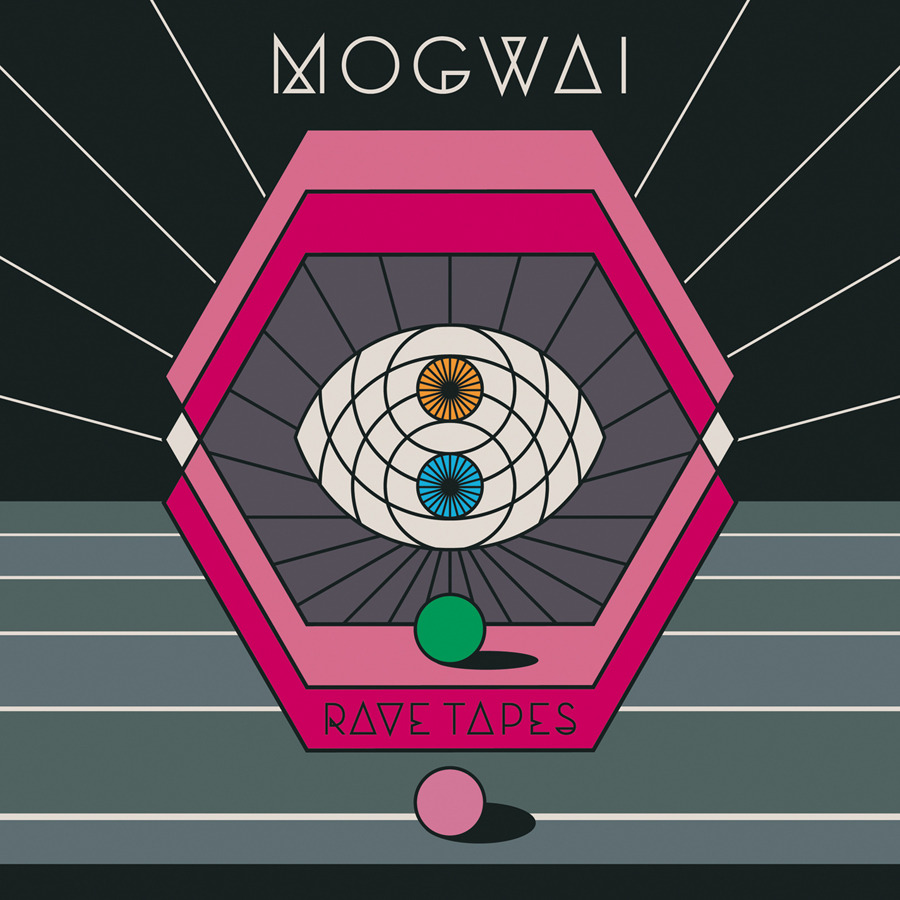
Fans and detractors alike would probably agree that a defining characteristic of Mogwai's last few records has been the symbolic spinning of wheels. It is disappointing, then, that the band would deem the best course of action is to frame the spinning wheels as a deliberate move to concretize a style and not the lack of inspiration everyone knows it to be. Rave Tapes was promoted as having an abundance of electronic instrumentation, but that is a disingenuous move, both because it is neither a new element nor is it nearly as prominent as it is suggested. Rather, it is the only distinguishing feature of a release interred in its own indifference.
What I didn't need to hear from Mogwai was them trudging through another middling instrumental workout as if the exhaustion of syncing these analog synthesizers to the BPM they wanted drained whatever life force was left for writing melodies. No one should be championed for landing on beat a full four minutes or accomplishing rudimentary layering. "Simon Ferocious" is the most pragmatically energetic of the songs on Rave Tapes, and even then the guitar soloing in the last minutes seems forced. "Remurdered" pulls the same kind of reluctant synth arpeggio exercise to slightly improved results, with a low-pitched analog saw wave carrying the momentum that Mogwai forgot was important on much of the later songs. "Repelish" plays the spoken word trope card to save a dying melody, while "Deesh" clings to anthemic buildups that cannot find a point. The rest do some variation of the same slow burn post-rock thing that has been in vogue and simultaneously kind of played out ever since it existed. "Blues Hour" and "The Lord Is Out Of Control" plug some sheepish vocals in between choruses for a change, standing out only among such odd bland company.
It is a credit to Mogwai's innovation that in their prime and even occasionally past it they have been able to take the typically sedative processes of guitar-driven post-rock to interesting places, and it is probably not a surprise that such a perfect storm of inspiration as seen onYoung Team is a rarer thing than they would like it to be. Still, the shifting averages of quality material on albums like Rave Tapes are doing a shame to the good work they have contributed in the past. Mogwai cannot be running to the studio to record every time they purchase a Juno; they owe it to themselves and their reputation to simply try harder than this.
Samples:
 
Read More
- Administrator
- Albums and Singles
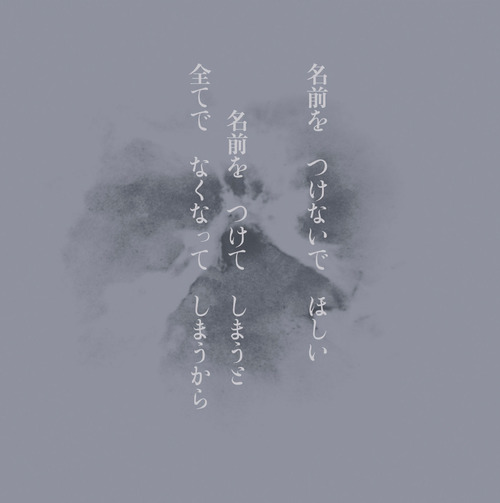 When Keiji Haino reignited the fires at the center of Fushitsusha that had lain dormant for about a decade, it was inevitable that a change of focus would occur in the group’s music. Two albums recorded for Heartfast in 2012 saw the gaping chasms of noisy rock dropped for something more angular and rhythmically challenging. A third album was promised but, Haino being Haino, this has expanded the series further to become a tetralogy with these two releases.
When Keiji Haino reignited the fires at the center of Fushitsusha that had lain dormant for about a decade, it was inevitable that a change of focus would occur in the group’s music. Two albums recorded for Heartfast in 2012 saw the gaping chasms of noisy rock dropped for something more angular and rhythmically challenging. A third album was promised but, Haino being Haino, this has expanded the series further to become a tetralogy with these two releases.
 
Both discs were recorded at the same time with the latest line up of Fushitsusha with Ryosuke Kiyasu on drums and Kamekawa Chiyo on bass who have been touring with Haino for the last couple of years (the line up who recorded the 2012 albums seemed to have been left at home early on). As a result, Kiyasu and Chiyo have had time and experience to delve deep into Haino’s methods and this is evident from the recordings here. This Fushitsusha feels lean and powerful, gone are the nulling voids of previous line ups and instead the music is tight and punchy.
On 名前を つけないで ほしい 名前 つけて しまうと 全てで なくなって しまうから (Please don't name it. If you name it, it will cease to become all), the group run through five tracks in about 15 minutes which is practically punk rock speeds for Fushitsusha. Haino’s guitar is still wild but seems less aggressive than before and I would almost (stress almost) suggest that "なしくずし" is one of his more accessible songs in a long time. Though I would hasten to add that it is accessible in the same way as The Velvet Underground’s "I Heard Her Call My Name" is accessible. Things get a bit more adventurous on "はれつしろ (No.1)," where an older sort of Fushitsusha vibe is channeled. Haino manages to tear the temporal relationships between his singing and his guitar playing apart without once letting either aspect of his performance fall into step with what the rest of the group are doing.
The demanding time signatures explored during their last couple of tours pop up on songs like "なぞらない" and "ここにあるものは あっちにあるときは…" (the album’s one long song which makes up about half the disc’s run time). Here, Kiyasu and Chiyo head into what at first seems like free improvisation but quickly reveals itself to be highly controlled and exacting rhythmic patterns. It takes a few listens to get adjusted to what they are doing but, once my brain has acclimatised to it, it becomes quite hypnotic. In particular, "ここにあるものは あっちにあるときは…" has such a gentle and restrained approach that makes the unusual structure of the piece seem less alien. The barely-there music makes it more theatrical, bringing to mind the precision and strangeness of Samuel Beckett.
samples:
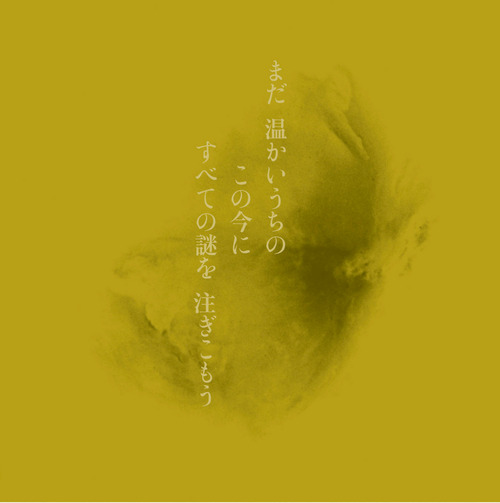 The second of these albums, まだ温かいうちの この今に 全ての謎を 注ぎ込んでしまおう (In the now, while it's still warm, let's pour in every mystery; the more observant reader might notice this is very similar in title to the latest Haino/Ambarchi/O’Rourke trio release) appears to be the same ideas explored from a different perspective. Two of the pieces have the same name (but numbered differently) with very little else in common. Given how Haino seemed to act as a conductor as much as a lead singer/guitarist during their show in Dublin a little while back, it would appear that these recordings might be the same philosophically even if the end results are different. "あいつの 名前をよぶな (No.2)" and "はれつしろ (No.2)" are both cut from the same cloth, a heavy prog feeling running through them as the three players all sound like they are playing a different freakout bit from three different 70s albums. It sounds tremendous.
The second of these albums, まだ温かいうちの この今に 全ての謎を 注ぎ込んでしまおう (In the now, while it's still warm, let's pour in every mystery; the more observant reader might notice this is very similar in title to the latest Haino/Ambarchi/O’Rourke trio release) appears to be the same ideas explored from a different perspective. Two of the pieces have the same name (but numbered differently) with very little else in common. Given how Haino seemed to act as a conductor as much as a lead singer/guitarist during their show in Dublin a little while back, it would appear that these recordings might be the same philosophically even if the end results are different. "あいつの 名前をよぶな (No.2)" and "はれつしろ (No.2)" are both cut from the same cloth, a heavy prog feeling running through them as the three players all sound like they are playing a different freakout bit from three different 70s albums. It sounds tremendous.
There is another change of direction on "ここになってしまう." They take a straight but distinctively non-rock rhythm (think Faust’s bit of their collaboration with Tony Conrad, Outside the Dream Syndicate) and on its skeletal frame, Haino hangs sparse vocals with a sense of detachment to match the music. However, the rest of the disc feels a little directionless; the out of time experimentation having run its course given that it was also present on the first album. Part of me feels that one great album could have been made out of the two sessions rather than a good and a not quite so good album. Perhaps part of my problem is that I have been listening to them back to back since I got them and should probably give them a bit of thinking space in between. In any case, a mediocre Fushitsusha album is worth ten albums by most other groups so once Haino keeps churning them out, I will be happy.
samples:
- ここになってしまう
- あいつの 名前をよぶな(No.2)
- さらに重くなってしまった罪
 
Read More
- Administrator
- Albums and Singles
 Even though Turman began his music career in the early 1970s and co-founded NON with Boyd Rice, he has not been as prolific, nor has he garnered the same accolades as many of his contemporaries have. Recent collaborations with the likes of Jandek and Aaron Dilloway have lead to a resurgence of interest, and Beyond Painting is one of the products of this rediscovery. Presented here as a luxurious double LP reissue of a self-released CDR, Turman's work is given the recognition it deserves.
Even though Turman began his music career in the early 1970s and co-founded NON with Boyd Rice, he has not been as prolific, nor has he garnered the same accolades as many of his contemporaries have. Recent collaborations with the likes of Jandek and Aaron Dilloway have lead to a resurgence of interest, and Beyond Painting is one of the products of this rediscovery. Presented here as a luxurious double LP reissue of a self-released CDR, Turman's work is given the recognition it deserves.
The material was actually recorded back in 1990 but did not see the light of day until Turman self-released them as a CDR 20 years later.Two-plus decades after their initial creation, these pieces do not sound dated in the slightest, and in hindsight perhaps more progressive and prophetic than many from the era do.
It is on pieces like "First Quarter," with its light, echoing ambience and drifting feel that seems to herald the development of the isolationist sub-sub genre of minimalist music some years later.The repetitive drone and almost chanting voices element of "The Unforgiven" that, via its sporadic but noteworthy evolutions, conveys a similar sound and sense that the likes of Bill Laswell and Mick Harris would later work heavily within.
There is a certain darkness that resides within all of these pieces, but one that is sophisticated and restrained.On "Soft Self Portrait" the bleakness comes about amidst gentle horn-like tones and reversed melodies that results in a composition that is more haunting, rather than frightening.The layered, looped string sounds of "Beyond Painting" convey a similar feel, one that is a bit more tinged nostalgia rather than outright malignance.
For me though, the stand out piece was "Al-Qa'ida," with its vaguely jazz noir guitar and electronics structure that has more of a rhythmic throb to it, rather than the more spectral, textural ambience of the other pieces.From a similar cloth is "Reflux," with a more conventional synthesizer sound and cyclic sequenced melody at the forefront.As it goes on, the melodic pattern falls away to focus on a reverberating expanse and what sounds like echoing digital bells, one of the few moments that reflect the era in which it was recorded.
It is only that bell-like tone on "Reflux" that places this album at a specific point in time, because beyond that it sounds as if it could have been recorded yesterday.While the technological aspect of that might not be overly impressive, since this is not a work that was hung up on digital reverbs or synth presents of the era, it is more the sense of structure and composition that is so forward thinking.The swirling melodies and shifting layers resemble the top tier of artists working currently within this style of music, so considering this dates back nearly 24 years serves to emphasize the brilliance of Robert Turman as an artist and composer.
samples:
 
Read More
- Administrator
- Albums and Singles
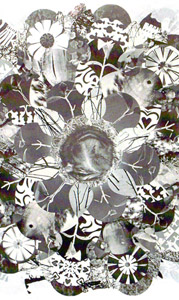 As one of the preeminent psychedelic rock/electro acoustic super groups in the Upstate New York/Massachusetts area, Twilight of the Century have not been overly prolific amongst their many related projects, with this tape representing their first actual release since their founding in 2008. The rock half, Eric Hardiman and Ray Hare, make up Century Plants and have a slew of solo guises, while the more avant garde experimentalism is the work of Mike Bullock and Linda Aubry Bullock, who largely work under their own names and as Rise, Set, Twilight. Hibernation captures the quartet carefully balancing those more aggressive, guitar focused tendencies with the subtle use of electronics wonderfully.
As one of the preeminent psychedelic rock/electro acoustic super groups in the Upstate New York/Massachusetts area, Twilight of the Century have not been overly prolific amongst their many related projects, with this tape representing their first actual release since their founding in 2008. The rock half, Eric Hardiman and Ray Hare, make up Century Plants and have a slew of solo guises, while the more avant garde experimentalism is the work of Mike Bullock and Linda Aubry Bullock, who largely work under their own names and as Rise, Set, Twilight. Hibernation captures the quartet carefully balancing those more aggressive, guitar focused tendencies with the subtle use of electronics wonderfully.
The four pieces that make up this tape were recorded in a single session, yet each have their own distinctive feel.The first half of the cassette is skewed towards the lighter sounds more, with "Hibernation 1" heavily built upon modular synth twinkles and a low, wavering electronic drone that sounds just slightly, intentionally out of tune in order to sound just a bit uncomfortable.Vocals from both Linda Aubry Bullock and Ray Hare lay low in the mix, and even when the bass guitar booms a bit, it remains hushed and just as quickly drifts away into a universe of space echo and engine-like electronics.
The following piece emphasizes the electronics more, but with a looser and less structured feel, bringing in a fair bit of chaos.It is a bit messier comparatively, but never does it come across as unstructured or unfocused noodling.On the flip side, "Hibernation 3" is where Hardiman and Hare flex their muscles a bit more and move to the forefront.Right up front there is distorted guitar and foundation rattling bass, but tastefully echoed and reinforced by a subtle bed of electronics.The bass leads crank up the psychedelic aspect of the sound, while the guitar provides a nice noisy squall as a backing.
The final piece does not seem to sit too definitively in either the electronic or the rock ends of the spectrum, but its wet, splattering electronics and disjointed rhythmic pulses lead to it developing its own idiosyncratic identity.It has a harsher, aggressive quality to it that vacillates between soft and rough, at times tightly honed and well organized, other times a bit disheveled.The concluding half is more structured, however, and even has a somewhat pretty finish to an otherwise spiny and jagged composition.
It is a bit frustrating to know that Twilight of the Century has been so non-prolific in the past five years, because Hibernation is a tantalizing bit of improvised psychedelic electronics that simply made me want to hear more.However, their extremely sparse discography makes that pretty much impossible, so I will just have to wait patiently for the next release.All four artists here are amazing in their own right, but Twilight of the Century has them playing off of one another that ends up being greater than the sum of its parts.
samples:
 
Read More
- Administrator
- Albums and Singles
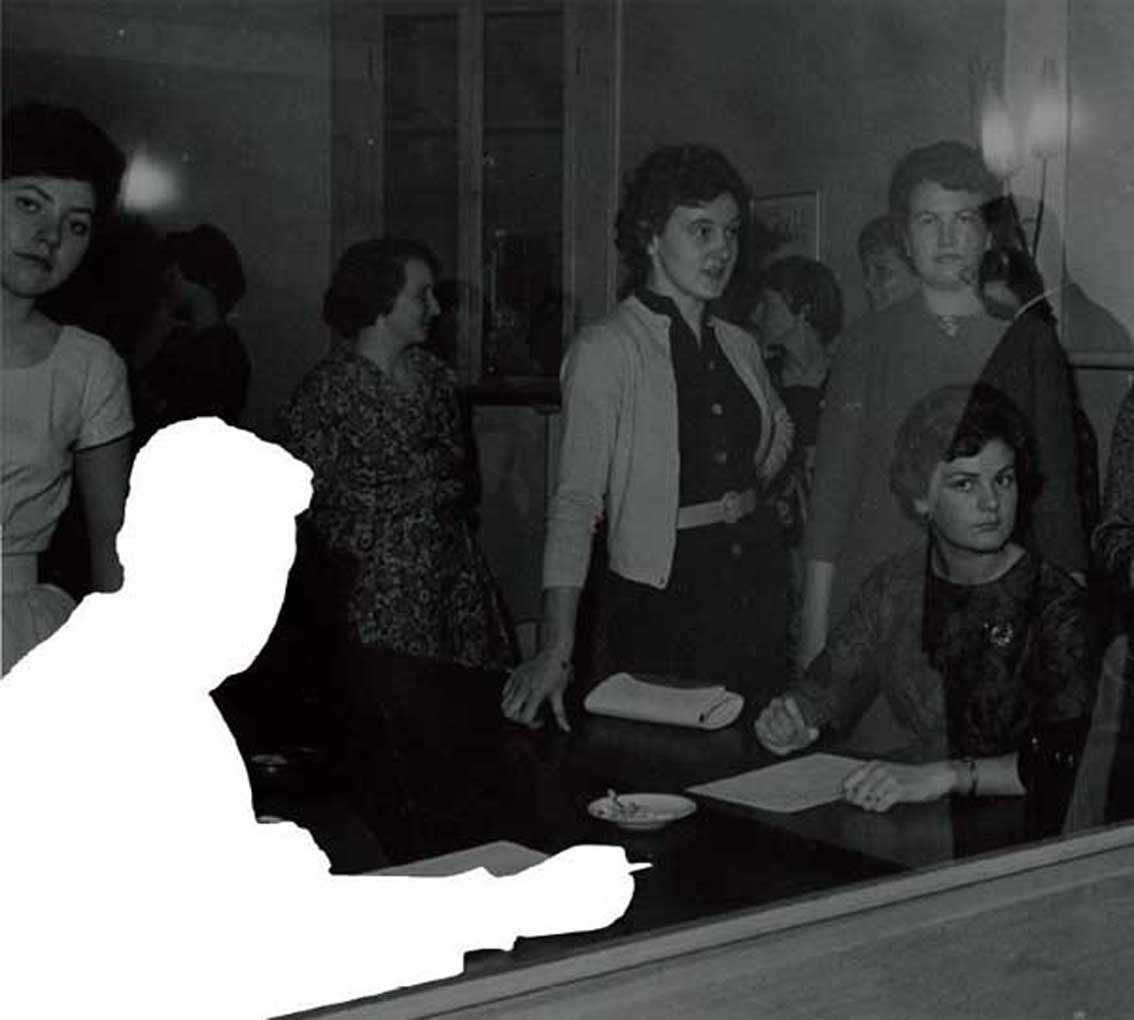 Originally released as an extremely limited LP on Savoury Days and recently reissued by Luke Younger's Alter imprint, this Southeast England band's second album was one of 2013's most criminally overlooked releases.  Combining post-punk deconstructionism, heavy industrial textures, and a strong bent for collage/improvisation, this enigmatic ensemble is a welcome addition to the beloved pantheon of hard-to-define, fringe-dwelling British weirdos like Zoviet France, Throbbing Gristle, and This Heat.
Originally released as an extremely limited LP on Savoury Days and recently reissued by Luke Younger's Alter imprint, this Southeast England band's second album was one of 2013's most criminally overlooked releases.  Combining post-punk deconstructionism, heavy industrial textures, and a strong bent for collage/improvisation, this enigmatic ensemble is a welcome addition to the beloved pantheon of hard-to-define, fringe-dwelling British weirdos like Zoviet France, Throbbing Gristle, and This Heat.
This is an atypically difficult album to describe, as there are all kinds of disparate strains colliding at once and they often come together in a rather uncategorizable way.Although the participants are uncredited, one of the group's founding members is recording engineer John Hannon, which explains a key part of the band's aesthetic: these pieces are clearly rooted in noise and improvisation but the end products sound deliberate, heavy, and hallucinatory in a way that indicates that someone with a distinct vision spent an enormous amount of time in the studio sculpting the raw material into something far better.  Some other probable participants are recent Andrew Chalk collaborator Tom James Scott and vocalist Nina Bosnic, though only Bosnic's contributions are distinctly identifiable.  There are other members too, but most of their contributions have been cannibalized for texture and atmosphere, though some melancholy violin melodies seem to have made it through the editing process intact.
There are two distinct types of "songs" that Liberez do brilliantly: heavy, quasi-industrial soundscapes and pieces that I would call "ethnographic forgeries," for lack of a better term.  The album's clear highlight, "A Warning," falls into the former category, combining a deep rumbling hum with Bosnic's disjointed "distressed answering machine message" vocals and a gathering storm of distorted, detuned bass; crackling noise; and swooping feedback.  Nina's vocals are even more prominent on the similarly excellent "Nema Te," endlessly intoning a sad, ravaged melody amidst a haunting miasma of hiss and eerily looping and chirping field recordings.  It only lasts for a minute and a half, but it is pure disturbing, surreal genius.  If I had heard it totally out of context, its mystery would probably haunt me for months or years, as it sounds far more like a creepy communique from the spirit world than anything resembling a song by a band of living humans.
"Nema Te, Pt. 2," on the other hand, is the finest of Liberez's ethnic/ritualistic "folk" excursions, an area where they share some common ground with folks like Natural Snow Buildings and Big Blood.  Though it initially begins with clanging metallic thump and a reprise of the forlorn melody from the first part, the piece gradually morphs into an echo-heavy vocal chant amidst snarling, anguished violins.  The violins make another strong appearance in the buzzing, ominous thrum of "Unhomely," embellishing Bosnic's clipped, looping vocals with a scraping, whining minor key melody that sounds both timeless and vaguely satanic.
The rest of the album is a mixed bag, but it is mostly a successful one.  Several pieces are quite atmospheric or incidental in nature and exist primary to further Sane Men's prevailing mood of disquiet and simmering menace.  Of the remaining pieces, the lengthy "My Madness Offends" is another album highlight, marrying eerily distant angelic vocals to an escalating rumble and frequent jarring slashes of static.  Another extended piece is the brutally cacophonous "What's Mine is Mine," which I am still very much on the fence about.  It kind of sounds like a crust punk band playing a drum kit made entirely of amplified garbage cans and oil drums most of the time, but unexpectedly segues into an interlude that sounds like a gnarled string collage culled from a The One Ensemble album.  Neat trick.
The fact that even my least favorite song on the album is totally striking, visceral, and unique is quite telling: this is an absolutely killer band.  While not all of Liberez's experiments are unqualified successes, they just about tear my head off when they get things just right and they do that with an impressive frequency.  Of course, I recognize that plenty of other fine bands have mined early industrial influences in the past, but these guys are different: Liberez is of the first acts that I have heard who feel like an genuine continuation of the UK's early '80s experimental music heyday rather than just a mere pastiche of very cool bands that they like.  And, if I am being completely honest, they are actually a lot better than quite a few of their influences.  I have not been this excited about a new band in a long time.
 
Read More
- Administrator
- Albums and Singles
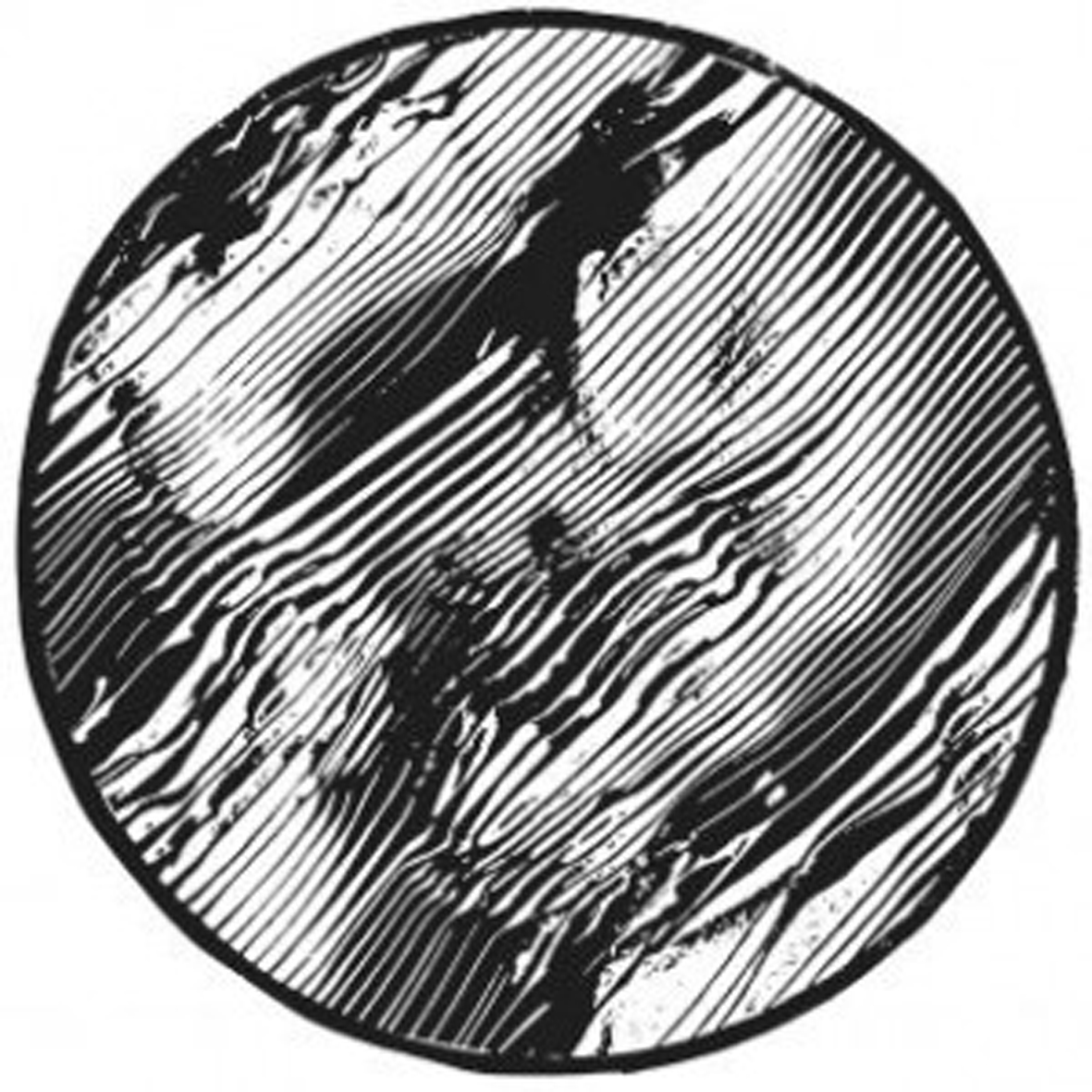 Listening to this EP is like being run over by a goddamn tank. Ren Schofield was one of the first harsh noise artists to take his cacophony to the dance floor and–along with Pete Swanson–he remains one of the best.  In fact, this, his first release for Mute's experimental music imprint, might be one of the finest Container releases to date.  While no dramatic evolution has taken place, aside from slightly more simple and accessible grooves, Adhesive is a perfectly distilled dose of relentless, pummeling noise-damaged techno from start to finish.
Listening to this EP is like being run over by a goddamn tank. Ren Schofield was one of the first harsh noise artists to take his cacophony to the dance floor and–along with Pete Swanson–he remains one of the best.  In fact, this, his first release for Mute's experimental music imprint, might be one of the finest Container releases to date.  While no dramatic evolution has taken place, aside from slightly more simple and accessible grooves, Adhesive is a perfectly distilled dose of relentless, pummeling noise-damaged techno from start to finish.
The opening two pieces strip the Container aesthetic down to its bare essence and work beautifully for it.  "Glaze" kicks things off with groove that sounds like it was unexpectedly cribbed from Neu!, but Schofield amps up the intensity with a thick, loud one-note bass line and some incremental additions to the pulsing beat.  I cannot point to any specific aspect that stands out as particularly brilliant or amazing, but it is extremely effective nonetheless, simply because an obsessively insistent and propulsive groove being strafed with electronic noise is an inherently wonderful thing.  I suppose it is a very meat-and-potatoes approach, but it definitely works.  In fact, the second song "Slush" is even better, emerging from a cacophonous industrial-noise opening to lock into a rumbling disco groove (and, of course, a similar firestorm of grinding, stuttering noise chaos).
The EP's second half is a bit more varied and adventurous, but occasionally less bludgeoning as a result.  "Complex" is probably the weakest track, though it reprises the "hyper-muscular krautrock pastiche" of "Glaze."  The problem is that it errs on the side of being too "rock" and is not quite wild enough to make it work.  It would have made a very cool breakdown or bridge in an actual, complete song of some kind, but it is not particularly compelling as a stand-alone, contextless vamp.  Much more exciting is the closing title track, which is absolutely pummeling and menacingly mechanized-sounding.  Also, "Adhesive" is on a completely different level than the rest of the album in regards to songcraft, as Ren throws in quite a few satisfying dynamic variations (stops and starts, breakdowns, etc.) and even attempts a hook of sorts with a loop of swooping dissonance.
Unfortunately, "Adhesive" inadvertently calls attention to the flaws of the other pieces, as Ren has a definite tendency to lock into a looping groove and ride it out for the entire duration of a song.  Also, his songs often tend to just endlessly build in density rather than offering multiple plateaus of tension and release–there is much room for improvement.  That said, Adhesive is so brief and so bludgeoning that Schofield's compositional deficiencies wind up being almost totally insignificant.  And Ren's prodigious talents as a producer render them even more so–these songs all invariably sound crushing.
Adhesive is a visceral, unrelenting bulldozer of a release. The details and nuances are ultimately fairly irrelevant, as this EP starts like an out-of-control train and ends before I have much time to think anything much deeper than "woah- that was heavy."
 
 
Read More
- Administrator
- Albums and Singles
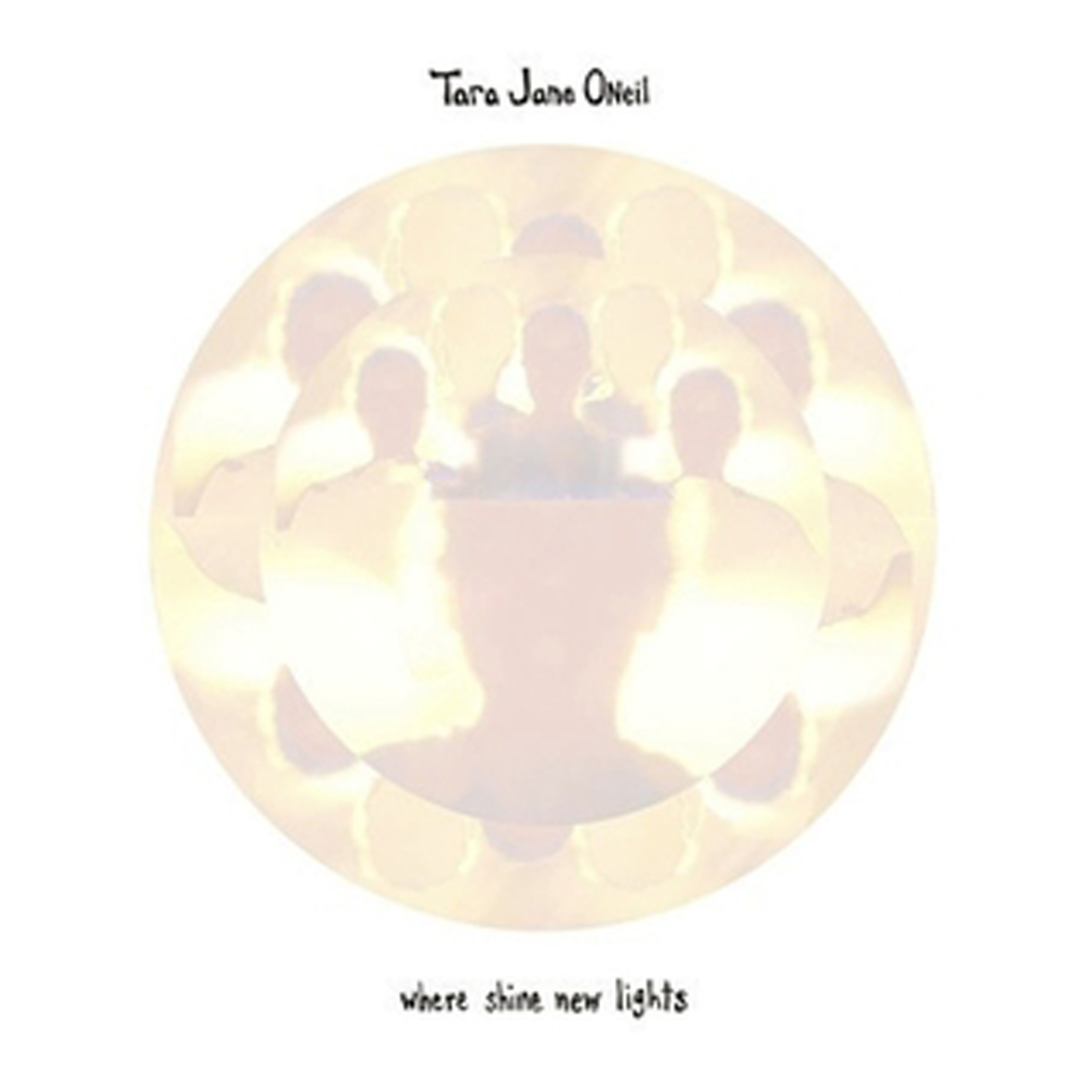 For some reason, there was a brief period in my life a while back in which every single person who learned of my early Red House Painters obsession immediately responded with some variation of "You know who else you would love? Tara Jane O'Neil."  At the time, I did not think the two artists had much in common at all, aside from the superficial traits of being both slow and melancholy, but I have always enjoyed hearing O'Neil whenever she resurfaces.  This time, after a five year solo album hiatus, she has resurfaced on Kranky–the perfect home for someone who sounds like Grouper's more sophisticated older sister.
For some reason, there was a brief period in my life a while back in which every single person who learned of my early Red House Painters obsession immediately responded with some variation of "You know who else you would love? Tara Jane O'Neil."  At the time, I did not think the two artists had much in common at all, aside from the superficial traits of being both slow and melancholy, but I have always enjoyed hearing O'Neil whenever she resurfaces.  This time, after a five year solo album hiatus, she has resurfaced on Kranky–the perfect home for someone who sounds like Grouper's more sophisticated older sister.
The overarching aesthetic of this album is a drifting, dreamlike sense of being barely there, but it is a masterfully sculpted, deliberate, and hypnotic one.  Consequently, Where Shine New Lights is best experienced as a complete album, so O'Neil's sensuous, half-lit reverie is allowed enough time to fully seep in and cast its enveloping spell. On a few occasions, however, Tara emerges from her languourous bliss-haze with something that resembles a possible single, like the achingly beautiful "This Morning Glory," which augments its wonderful melody and swooning hooks with atypically forceful accoutrements like drums, strummed rhythm guitar, and discernible lyrics.  That is inarguably the album's centerpiece, but each of the remaining few "real songs" are similarly wonderful, particularly the sad waltz of "Elemental Finding," though the folky, lilting "To Lull The Going" is certainly quite lovely as well.
The rest of New Lights shares a lot of common ground with labelmates Windy & Carl, offering up quite a bit of warm guitar/organ shimmer and cooing, reverb-heavy vocals.  Tara does that quite well too, of course, but it is always welcome when her too-often-latent experimental tendencies and other more distinctive touches surface.  Those tendencies increasingly come to the fore as the album gets closer to the end, culminating in the closing "New Lights for a Sky," which features bowed cymbals or gongs, some actual dissonant notes, and tensely bowed strings.  Less overt instances are strewn about elsewhere though, as Tara's music is so extreme in its minimalism and understatement that even the smallest events can seem quite dramatic.  In fact, some of my favorite moments, such as the clanging buoy sounds in "Welcome" or the trilling guitar in "The Signal, Winds," probably would have gone completely unnoticed if they had appeared on an album by anyone else.
This is a great album, but that comes with a large caveat: it requires quite a bit of patience and attention to fully unlock its magic.  With the exception of perhaps "This Morning Glory," it is very easy to imagine most casual listeners dismissing this as something between "vaguely pretty" and "too sleepy."  It certainly is both pretty and sleepy, but there is much hidden depth to be found as well, as O'Neil excels at creating the quietest of quiet storms.  That, I think, is a large part of her appeal, as connecting with this album feels a lot like being let in on a secret.  Also, I can think of few other albums right now that I would rather wake up to on a frigid winter morning, as almost no one does "warmly narcotic" quite as wonderfully as Tara.  Very timely release, Kranky.
 
 
Read More

